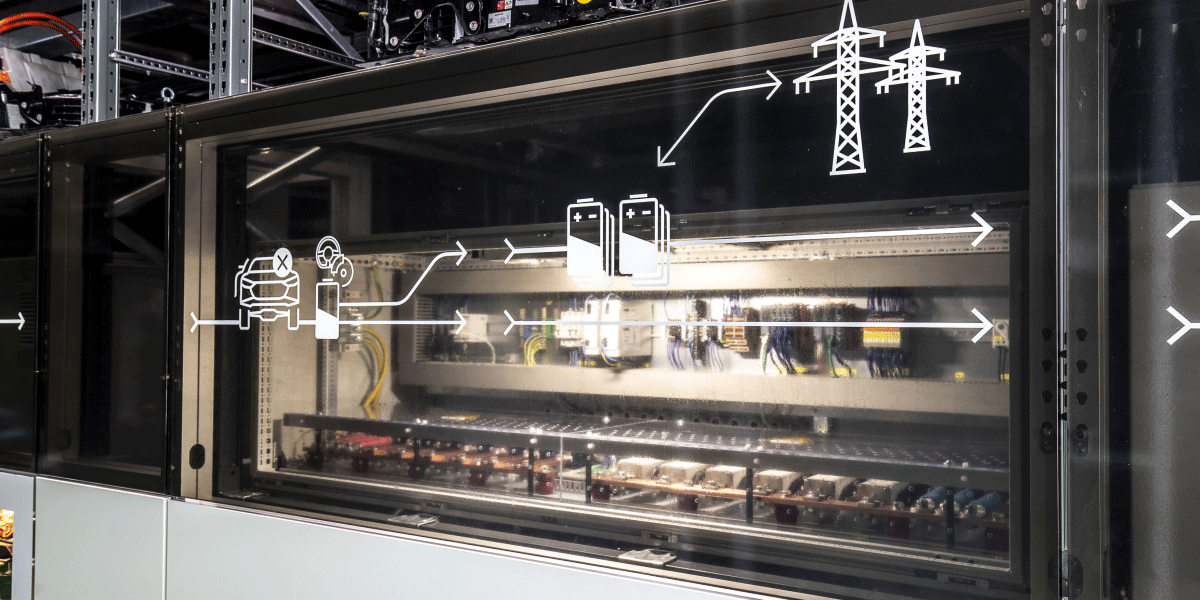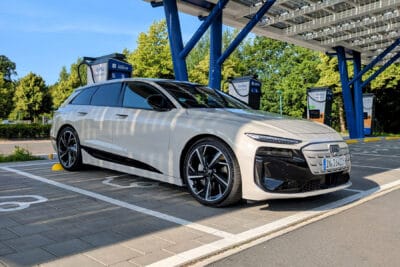The Mobility House shows how to earn from EV batteries
The Mobility House (TMH) has, for the first time, proven that electric vehicle batteries can take part in energy market trading and achieve four-digit revenues per vehicle. The key is in the EVs’ flexibility as mobile storage units, just the experimental set-up was stationery.
The Mobility House is based on the EUREF Campus in Berlin, a hub for trying solutions that may get Germany closer to reaching its climate targets. The result described above was gained over six months with TMH using real electric car batteries – but not cars. The batteries in the trial form stationary energy storage that The Mobility House had built at the EUREF campus in 2019 from retired Audi e-car batteries. Specifically, 18 of the 20 e-tron batteries installed in the facility were used for the test.
The trick was in software that helped TMH to simulate real driving and charging behaviour based on average German data for each battery. When not “driving”, the system made the energy available where possible to the European Power Exchange EPEX Spot. And this is where the gains were made, amounting to annual savings of €650 a year after taxes, so TMH. The value was extrapolated as testing took place over six months.
In detail, TMH simulated charging/discharging via an 11 kW wall box and assumed an average mileage of 18,250 kilometres (annual value). The charging and discharging strategy took into account, among other things, minimum storage levels at departure. When the vehicles were plugged in, the flexibility inherent in charging and discharging the batteries could be made available to the energy system. When the cars were in driving mode, they were unavailable to the energy market.
TMH tested both V1G and V2G, that is, V1G”, i.e. the simple scheduling or delaying of charges and the possibility of bidirectional charging and discharging of the batteries. The Mobility House developed the software, which regulated the batteries’ state of charge via algorithms and marketed their aggregated flexibility on the energy markets. Testing also took into account several energy markets simultaneously (day ahead and intraday market) to achieve the best possible values and savings at any given time. However, it was not only about maximum revenues: the mobility demand stored in the driving profiles, the degradation of the battery and the upstream grid connection were also virtually taken into account.
“The revenues generated in this field trial by our algorithms are an impressive demonstration of the value of bidirectional charging,” says Marcus Fendt, CEO of The Mobility House. “We are working hard on products to unlock this value for our customers and thereby make the huge storage capacity of electric cars available to the energy system. To make this possible, it is now a matter of removing regulatory hurdles and not literally leaving the existing potential in the field of smart charging lying or standing on the road.”
TMH already set this target when setting up the battery installation with Audi in 2019. Back then, a spokesperson told us that the primary aim was not merely power control “but building a business case” in software. Audi’s Reiner Mangold, responsible for sustainable product development, added that he considers second-life applications for EV batteries “essential to making electric cars affordable” and for the car industry to survive. The energy storage system can absorb excess electricity from wind power and photovoltaic systems or the campus’ own combined heat and power plant through intelligent integration into the power grid.
Source: Info via email; additional reporting by Sebastian Schaal, Germany.





0 Comments